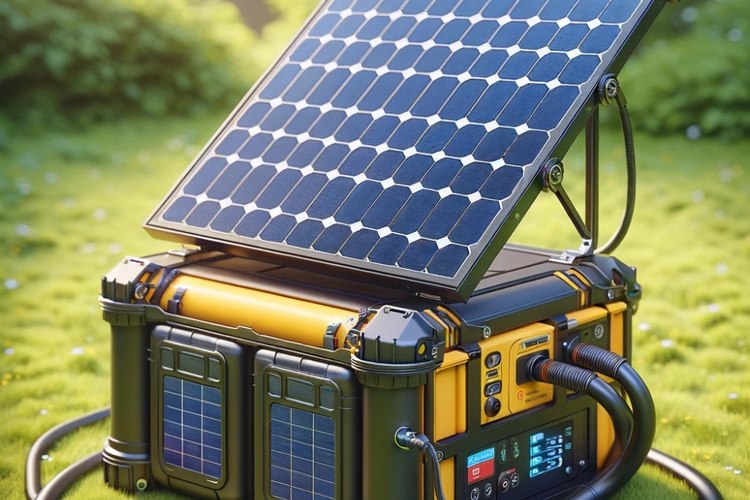Understanding Power Generators: Types, Applications, and Efficiency
Power generators have become essential equipment for both residential and commercial use, providing electricity during outages and in remote locations. From traditional diesel models to emerging renewable technologies, modern generators offer diverse solutions for various power needs while balancing factors like fuel efficiency, environmental impact, and cost-effectiveness.

Power generators serve as crucial backup systems during outages and primary power sources in remote locations where grid electricity isn’t available. These versatile machines convert various energy forms—fossil fuels, solar radiation, or mechanical energy—into usable electricity. As energy security concerns grow and extreme weather events become more frequent, understanding the different types of generators and their applications has never been more important for homeowners and businesses alike.
How Do Diesel Generators Work?
Diesel generators remain among the most reliable and widely used power generation systems worldwide. These generators operate on a straightforward principle: diesel fuel combustion drives a piston, which turns a crankshaft connected to an alternator that produces electricity. The process begins when diesel fuel is injected into a compression chamber where it’s mixed with air and ignited without requiring a spark plug.
Modern diesel generators offer several advantages over other fuel types. They typically provide excellent fuel efficiency, with some models converting up to 40% of fuel energy into electricity—significantly higher than standard gasoline generators. They also deliver superior longevity, with properly maintained units often lasting 20,000-30,000 operating hours. For industrial applications, large-scale diesel generators can produce anywhere from 15 kW for small businesses to several megawatts for industrial facilities.
What Makes Solar Power Generators Different?
Solar power generators represent the fastest-growing segment in the alternative energy generator market. Unlike conventional fuel-burning generators, solar generators harvest energy from sunlight using photovoltaic panels, convert it to electrical energy, and store it in batteries for later use. This stored energy can then be converted from DC to AC power through an inverter for household appliances.
The primary advantages of solar generators include zero fuel costs, silent operation, and minimal maintenance requirements. Modern portable solar generators typically range from 100W to 2500W capacity, making them suitable for camping trips, small home backup systems, or powering essential devices during outages. While their initial cost is higher than comparable fuel-powered units, the long-term savings on fuel and maintenance often make them economically advantageous over time.
What Types of Home Generators Are Available?
Home generators fall into several categories designed to meet different household needs. Standby generators are permanently installed systems that automatically activate when utility power fails. These units typically run on natural gas or propane and can power an entire home. Portable generators offer flexibility for occasional use and can be moved as needed, typically running on gasoline or propane with outputs ranging from 1,000 to 10,000 watts.
Inverter generators represent a newer technology that produces cleaner power with less harmonic distortion, making them ideal for sensitive electronics. These units are typically more fuel-efficient and quieter than conventional portable generators. For homeowners seeking renewable options, home solar generators with battery storage systems provide clean energy independence, though at a higher initial investment.
How Do Electric Energy Generators Function?
Electric energy generators operate on the principle of electromagnetic induction discovered by Michael Faraday. When a conductor moves through a magnetic field, it creates an electrical current. In conventional generators, this movement is typically created by turbines powered by steam, water, or wind. The rotating turbine spins a series of magnets around a conductor, generating alternating current (AC) electricity.
Modern electric generators have evolved significantly in efficiency and design. Synchronous generators maintain precise speed-to-frequency ratios and are commonly used in power plants. Asynchronous (induction) generators are simpler and often used in wind turbines. Permanent magnet generators eliminate the need for external excitation systems, making them more efficient for certain applications. Each type offers specific advantages depending on the intended use, from industrial power production to residential backup systems.
What Alternative Energy Generator Options Exist?
Beyond solar power, several alternative energy generator technologies have gained traction in recent years. Wind generators convert kinetic energy from moving air into electricity using turbines, with residential models typically producing 400W to 20kW depending on wind conditions and turbine size. Hydroelectric generators harness flowing water to generate power, with micro-hydro systems suitable for properties with streams or rivers.
Biomass generators convert organic materials like wood pellets, agricultural waste, or dedicated energy crops into electricity through combustion or gasification processes. Geothermal generators tap into Earth’s natural heat to produce steam that drives turbines. For portable applications, hydrogen fuel cells are emerging as clean alternatives that combine hydrogen and oxygen to produce electricity with water as the only byproduct.
How Do Generator Costs Compare Across Types?
When evaluating power generators, cost considerations extend beyond the initial purchase price to include fuel, maintenance, and operational expenses over the generator’s lifetime.
| Generator Type | Initial Cost Range | Fuel/Operating Cost | Lifespan (Years) | Total Cost of Ownership |
|---|---|---|---|---|
| Diesel (10kW) | $3,000-$10,000 | $0.95-$1.50/gallon | 10-20 | Medium-High |
| Portable Gas (5kW) | $500-$2,000 | $2.50-$4.00/gallon | 5-10 | Medium |
| Home Standby (20kW) | $4,000-$15,000 | $0.10-$0.20/kWh | 10-20 | High |
| Solar (5kW) | $5,000-$20,000 | Minimal | 20-25 | Low-Medium |
| Wind (10kW) | $15,000-$50,000 | Minimal | 20-25 | Medium |
Prices, rates, or cost estimates mentioned in this article are based on the latest available information but may change over time. Independent research is advised before making financial decisions.
Diesel generators offer lower fuel costs per kilowatt-hour but require regular maintenance. Solar and wind systems have higher upfront costs but minimal ongoing expenses. Home standby generators provide convenience but come with installation costs and fuel considerations. The optimal choice depends on specific power requirements, location, budget constraints, and whether the generator will serve as primary or backup power.
When selecting a generator, consumers should consider not only the purchase price but also installation costs, fuel availability, maintenance requirements, and expected lifespan. For intermittent use during emergencies, a portable gasoline generator might be most economical, while frequent users might find better long-term value in renewable options despite their higher initial investment.




